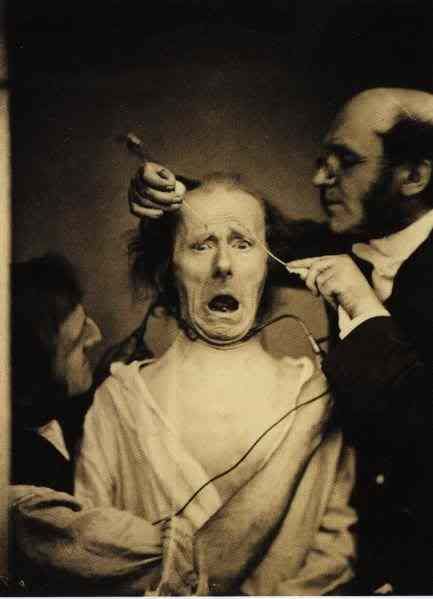Watching this, I couldn't help but be reminded of the pioneering research carried out by French neurologist Guillaume Duchenne in mid-19th Century. Duchenne was interested (among other things) in the underlying physical mechanisms responsible for facial expressions. To this end, he recruited a patient with facial paralysis (pictured below with Duchenne on the right). By applying electrical stimulation to different locations on the face, he could activate a variety of muscle groups, leading to the production of some rather grotesque facial expressions.

Most notably, Duchenne is responsible for recognizing that a true smile recruits not just muscle groups in the mouth, but also those around the eyes. This is the most sure-fire way to discriminate a false smile from a true one: someone producing a fake smile doesn't show wrinkling around the eyes. Thanks to Duchenne's research, genuine smiles are sometimes referred to as "Duchenne smiles."
References:
Parent, A. (2005). Vignettes in neurology: Duchenne de Boulogne (1806-1875). Parkinsonism and Related Disorders, 11, 411-412.







0 comments:
Post a Comment